

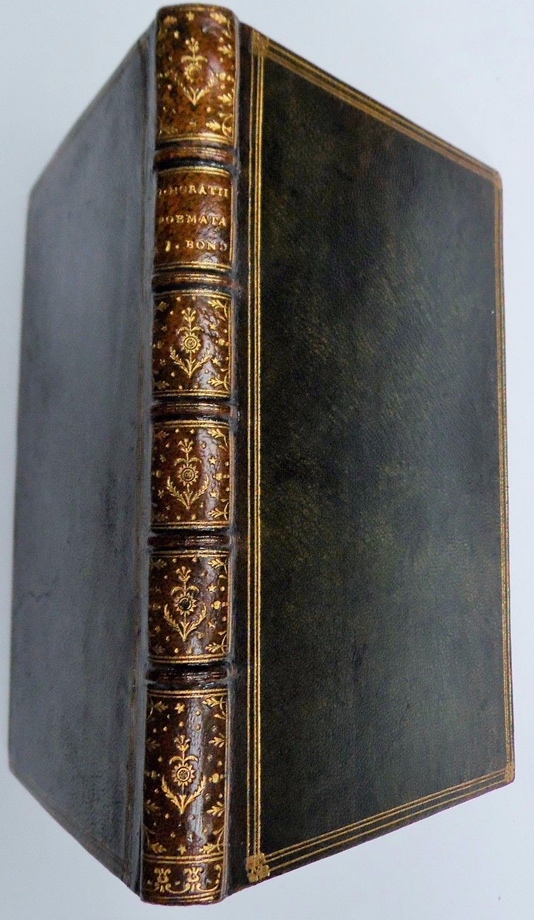
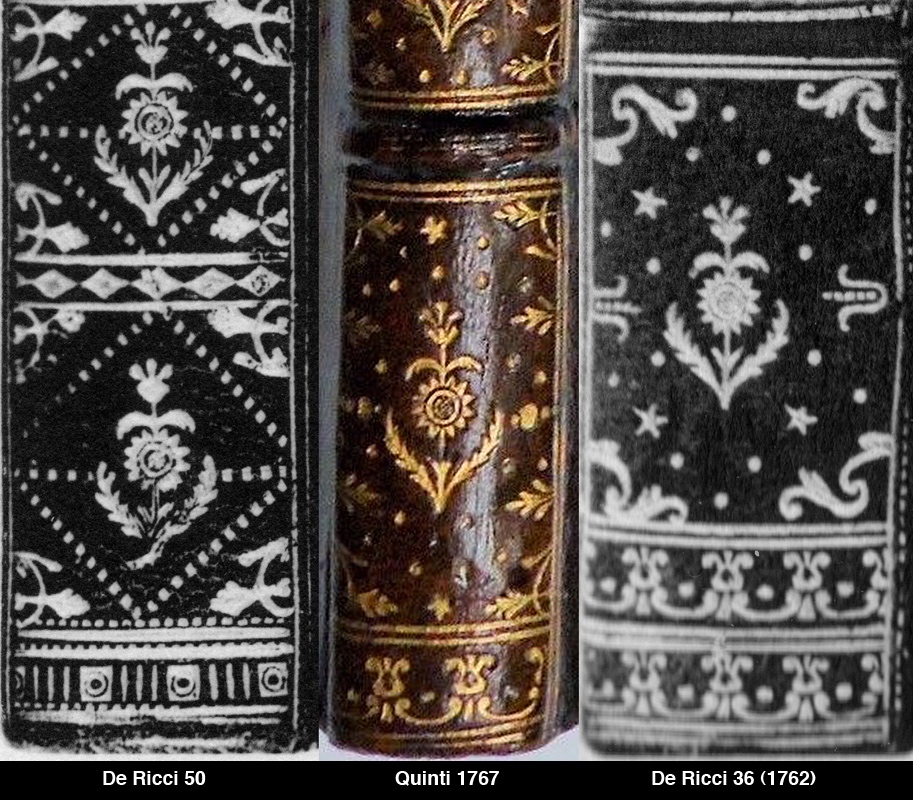
| As soon as I saw this on eBay, I felt certain that it was a binding by Derome as I had been working on similar spine elements that you will see on the next page as well as this inner dentelle with marbled endpapers which has shown up on the last few bindings that we have been exploring. The great thing about this binding is that for once it is found on a publication that is or could be contemporaneous, this binding cannot be older than 1767. By the looks of the spine palette of De Ricci 50 shown in Comparative Diagram 1, we see that this sort of palette and spine decoration was being used by the Derome workshop well passed 1770 and perhaps even up to 1780. This eBay example however shares some of the characteristics of Ricci 36 i.e. the dots and the stars in the spine compartments, which Ricci estimated as being made around 1762. See the next page for more about this kind of Derome binding. |
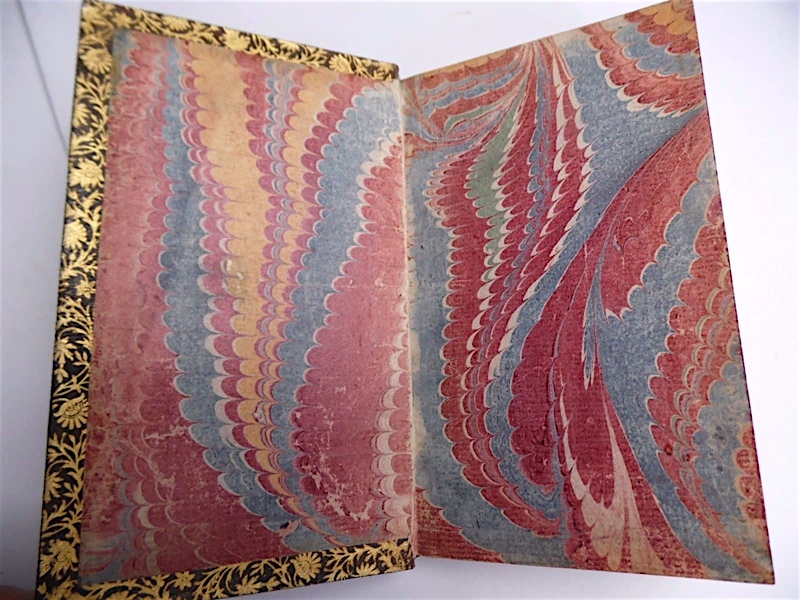
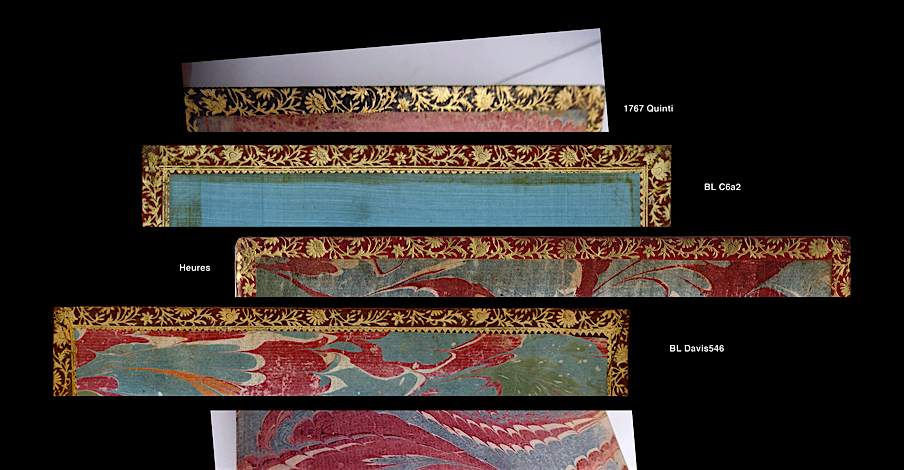
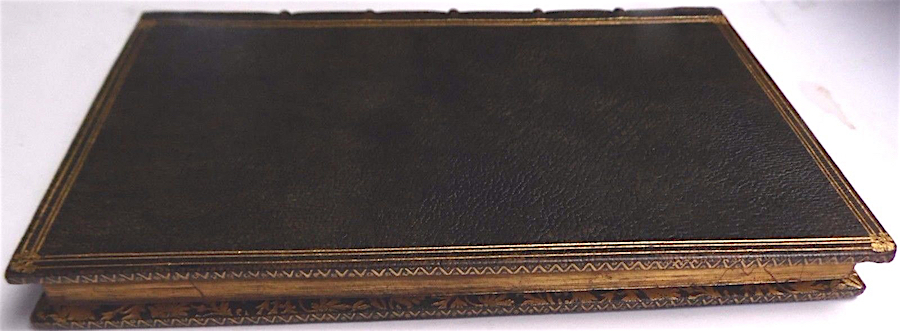
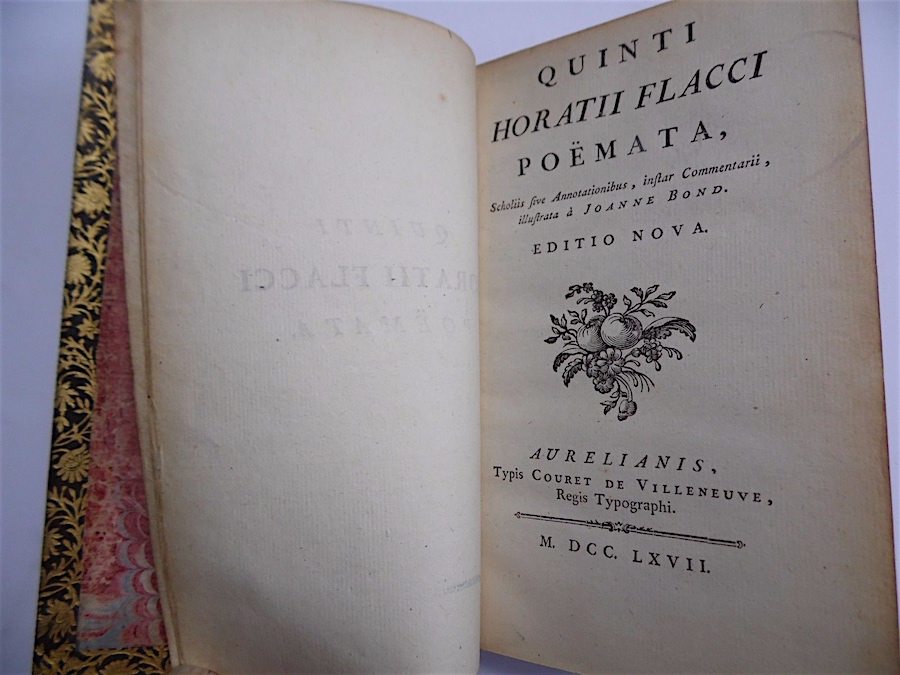
| Now that this treasure has arrived in the mail, I can show you some high resolution scans of the gold tooling, first we look at the inner dentelle shown below, click on this image to see a 1200 dpi enlargement. |

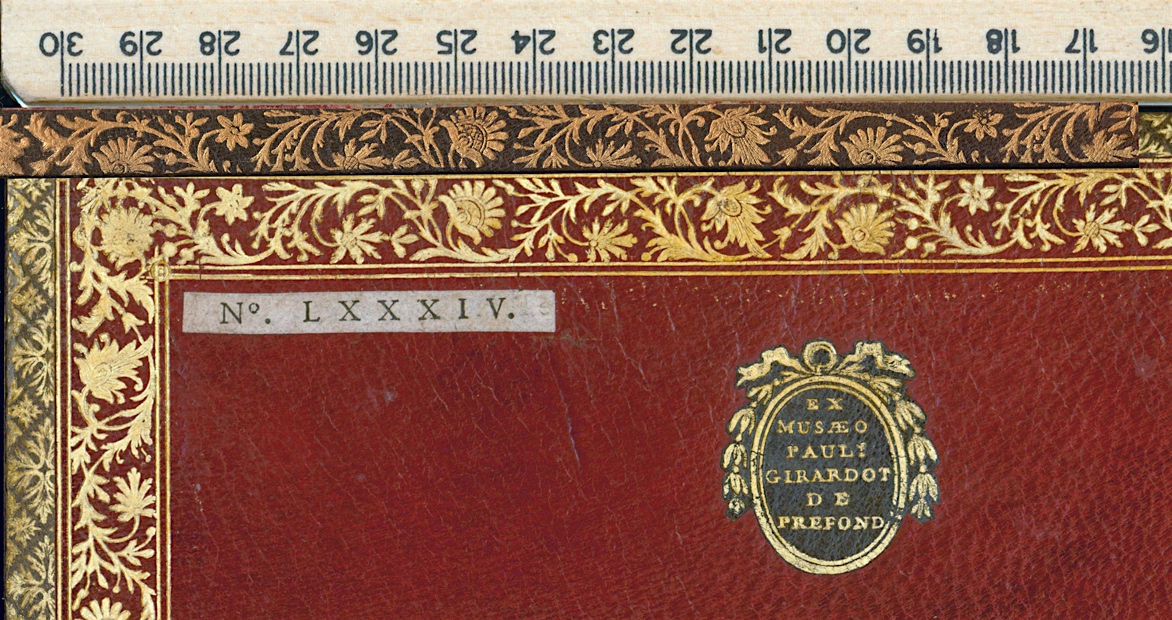
| In Comparative Diagram 2 we see that our 1767 inner dentelle matches the British Library example 7b12 with Prefond ex-libris. Our sample had to be rotated 180 degrees to match the 7b12 example in the same position. The 7b12 example is an exceptionally lucky find as it has been placed inside yet another roulette and here we can see it in its entirety. Comparative Diagram 2 demonstrates certain proof that the 1767 binding has been decorated with the tools of Derome le jeune. |

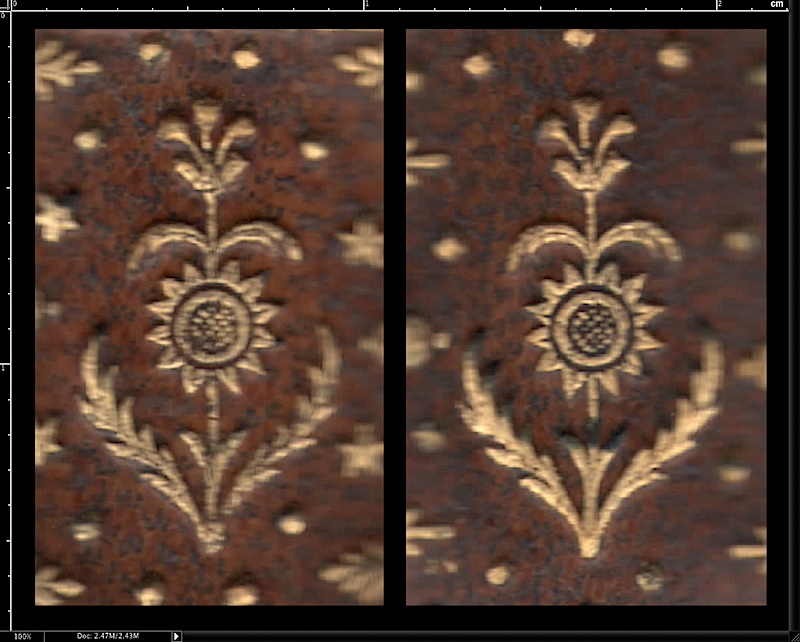
| The image shown above is from a 1200dpi scan of the spine, in as much as spines have a certain amount of curvature a scan is never going to be perfect, only the very center of the scan will be in focus, however for our purposes it is still very useful as it reveals some of the central detail of the imprint dj-16-2, never before have we been able to show this imprint in such detail. we can see the honeycombed interior of this fleuron. This tiny detailing is quite a surprise as it is truely miniscule, without magnification you are not likely to notice it, less than 2 millimeters in diameter, I suspect that the combined details of this imprint would make it very difficult to copy. The individual lines that compose this honeycomb are not straight but in short angular segments, it will be interesting to know just how such a small detail could have been made. |
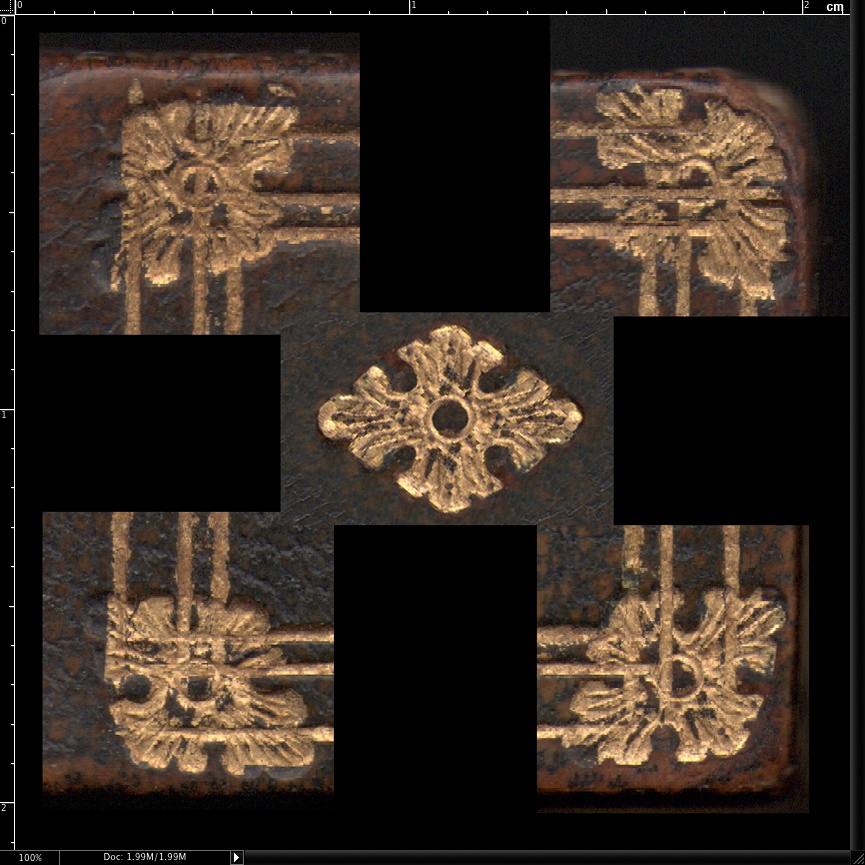
| The image shown above is from a 1200dpi scan of the corners of the front board. It is unusual to see these corner stamps so clearly, I have named these stamps dj-ff-2. These small tools cover the crossing of the filets to make them a bit more finished that just leaving the bare unkempt crossings, thus they are filet finishers (ff) and this is the second type I have catalogued. The model in the center this diagram is a virtual reconstruction, and not to be confused as an actual ff-2, it is there to give us a better idea of the actual form of this imprint. |
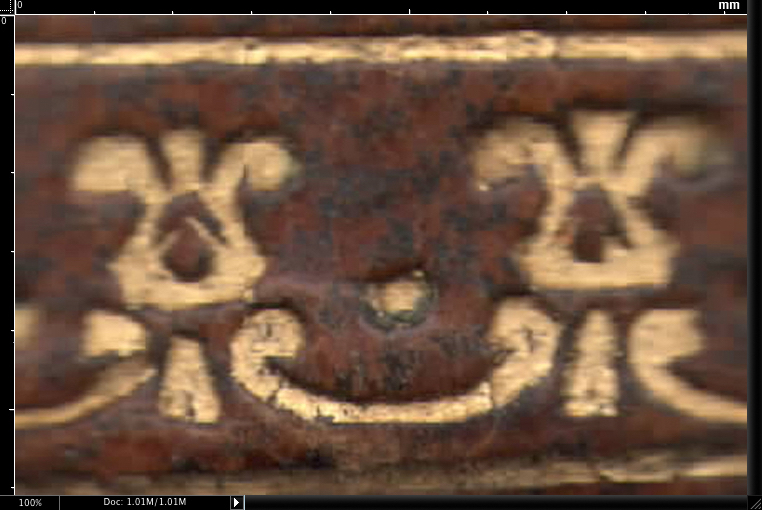
| The image shown above is at 2000 dpi, and here we discover something amazing, inside these pods there are two interior spikes. |
|
click here to return to the HOME page. click here to see the INDEX of the 2017 pages. see below links to previous work |
| Even experts are sometimes wrong, before you spend thousands on a book, please do your own research! Just because I say a certain binding can be attributed to le Maitre isn't any kind of guarantee, don't take my word for it, go a step further and get your own proof. In these pages I have provided you with a way of doing just that. |
| Virtual Bookings, created by L. A. Miller | return to the Home page of VIRTUAL BOOKBINDINGS |